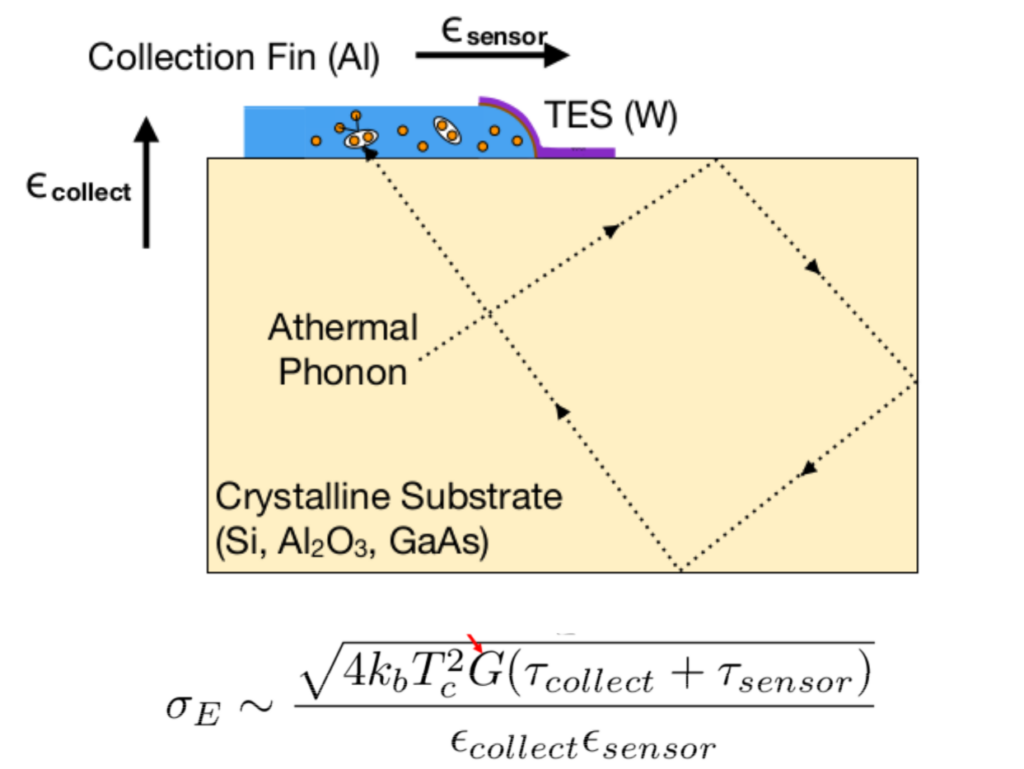The sensor energy resolution dominates the experimental DM mass reach. The “trick” to achieve extreme energy resolution is to not let the energy deposited by a DM interaction thermalize and raise the temperature of the whole target, which has a relatively large heat capacity. Instead, the energy is collected as athermal phonons faster than the thermalization time constant. This collected energy is concentrated into very small volume (and hence very small heat capacity) Transition Edge Sensors held at their superconducting transition threshold and allowed to thermalize there, where a miniscule temperature change translates into a large change in electrical resistance. Energy is collected is by virtue of athermal phonons breaking Cooper pairs in a superconducting aluminum metal film, when they hit the crystal-metal interface. Only phonons above 2x the superconducting Al bandgap of 3.6meV (1000 times smaller than the Si semiconducting bandgap) can do this. But for the scheme to work they must be long-lived in the crystal so they rattle around until they break a Cooper pair. The broken Cooper pairs behave as quasiparticles that diffuse within the Al. If a tiny TES is in contact with the Al collector, the quasiparticles will eventually find it (they have to do so before they decay). If the superconducting bandgap of the TES material is lower than that of the Al collector, the quasiparticles will decay as soon as they enter and be trapped, heating the TES and only the TES.
